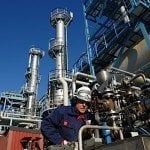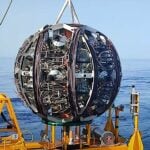
A team of researchers from MIT have developed an air-breathing battery capable of storing electricity with greater longevity and at a fraction of the cost of other energy sources. The development solves intermittency issues that often keep power sources from connecting to the grid.
Yet-Ming Chiang, Kyocera Professor of Materials Science and Engineering at MIT stated that the battery “inhales and exhales” oxygen, which balances the charge. “Breathing” in the oxygen causes the anode to discharge electrons to an external circuit, while releasing that oxygen recharges the battery by returning electrons to the anode.
The overall cost of the battery is 1/30th of the cost of lithium-ion batteries. At this rate, a larger system utilizing these batteries could store solar and wind power for approximately $20-30 per kilowatt hour, while competing batteries offer the energy density needed but cost upwards of $100 per kilowatt hour.
Chiang stated, “This meant maybe we weren’t focusing on the right thing, with an ever-increasing chemical cost in pursuit of high energy density. We said, ‘If we want energy storage at the terawatt scale, we have to use truly abundant materials.’” This pursuit led them to sulfur, which is easily accessible. The next step was locating a stable but inexpensive liquid for the cathode.

Researchers experimented with potassium permanganate, knowing that utilizing it as a cathode material, the reaction would discharge electricity. However, the process is typically impossible, so positive results were not anticipated. Continuing with the experiment, research author Zheng Li, a postdoc at MIT at the time, stumbled upon a discovery. While the reaction was not reversible, an oxygen reaction in the cathode caused the battery to recharge.
Describing the moment, Chiang remarked on his surprise at Li’s discovery. “I said, ‘Wait, you figured out a rechargeable chemistry using sulfur that does not require a cathode compound?’ That was the ah-ha moment.”
Chiang also stated that systems utilizing such batteries stand to compete with pumped hydroelectric storage systems. These systems provide much of the energy throughout the world. “The energy density of a flow battery like this is more than 500 times higher than pumped hydroelectric storage. It’s also so much more compact so that you can imagine putting it anywhere you have renewable generation.”






























